Splash Screen
Chapter Introduction
Section 1: The Rise of Rome
Section 2: From Republic to Empire
Section 3: Roman Culture and Society
Section 4: The Development of Christianity
Section 5: Decline and Fall
Visual Summary
Chapter Menu
The Romans built cities from England to Africa and connected them with roads. Using concrete, the dome, and the arch, they constructed amphitheaters, temples, law courts, and aqueducts. This aqueduct brought water 31 miles (50 km) to the city of Nîmes. The upper level was the waterway, the lower a road. In this chapter you will learn how the Romans influenced the development of cities.
• Why was it important to build aqueducts?
• How does your city supply water to its
residents?
Chapter Intro
What did we learn about city planning from the Romans?
Chapter Intro
Chapter Intro
The Rise of Rome
What supported Rome in conquering the Mediterranean?
Chapter Intro 1
From Republic to Empire
What factors contributed to the destabilization of the Roman Republic?
Chapter Intro 2
Roman Culture and Society
How wide-spread was the influence of Greek and Roman culture?
Chapter Intro 3
The Development of Christianity
How did Christianity change the Roman Empire?
Chapter Intro 4
Decline and Fall
What led to the eventual end of the Roman Empire?
Chapter Intro 5
Chapter Preview-End
The BIG Idea
Order and Security The Romans conquered and controlled the Italian peninsula and then the entire Mediterranean world.
Section 1-Main Idea
•
republic
• consul
• patrician
• praetor
• plebeian
Content Vocabulary
•
• virtually
inadequate
•
institutions
Section 1-Key Terms
Academic Vocabulary
• Carthage
• Rome
• Hannibal
• Latins
• Alps
• Sicily
• Etruscans
• Livy
• Roman Senate
Section 1-Key Terms
People and Places
Did geography play a significant role in the settlement of your community?
A. Yes
B. No
A. A B. B
0%
0%
Section 1-Polling Question
The Land and Peoples of Italy
Rome’s central location and geographic features made it a desirable location from which to expand.
Section 1
The Land and Peoples of Italy (cont.)
• The location of Rome was ideal for
settlement, and provided a central position in Italy from which to expand.
• An Indo-European people known as the
Latins were living in the hills of Rome from about 1500 to 1000 B.C. They were herders and farmers and spoke Latin.
Italy 500 B.C.
Section 1
The Land and Peoples of Italy (cont.)
• The Greeks and the Etruscans heavily influenced the development of Rome.
• Greeks came to Italy in large numbers during
the age of Greek colonization.
• The Greeks occupied Sicily and influenced
Section 1
Rome’s cultural and artistic systems.
The Land and Peoples of Italy (cont.)
• It was the Etruscans who influenced the
Section 1
Rome the most. By 650 B.C., they controlled the city and most of Latium.
Which people had a heavy influence on the development of Rome?
A. Carthaginians
B. Egyptians
C. Persians
D. Etruscans
0%
0%
Section 1
A. A B. B C. C 0% 0% D. D
The Roman Republic
The Romans were practical and skillful in politics and military matters.
Section 1
The Roman Republic (cont.)
B.C. when the last Etruscan king was overthrown and a republic was established.
• A new era in Roman history occurred in 509
• By 264 B.C., Rome had conquered virtually
all of Italy.
Section 1
• The Roman historian Livy provided stories that glorified the virtues of past Romans.
The Roman Republic (cont.)
• Rome was a successful empire because:
– Romans were good diplomats. They were smart about extending citizenship rights, and gave conquered states the autonomy to run their own affairs.
– Romans were excellent at military
Section 1
operations. They were brilliant strategists and built roads throughout the empire to move armies and supplies.
The Roman Republic (cont.)
• Rome was a successful empire because:
– Romans created practical legal and
Section 1
political institutions.
The Roman Republic (cont.)
• Patricians and plebeians made up Roman society. Men in both groups were citizens and could vote, however only patricians could be elected to public office.
Section 1
• Two consuls, chosen every year, ran the government and led the army into war. A praetor was in charge of civil law.
The Roman Republic (cont.)
• The Roman Senate was made up of 300 patricians who were elected for life. The Roman Senate selected the consuls and praetors and passed laws.
• Patricians and plebeians struggled over
Section 1
social and political equality. By 287 B.C., a law making all Roman males equal citizens was passed.
The Roman Republic (cont.)
• Rome’s first attempt at a legal system was the Twelve Tables, adopted in 450 B.C. This code of laws proved to be inadequate for the needs of the Roman society.
• Romans then established standards of
justice that applied to all Roman citizens. The principles of this legal system provide the basis of our current legal system.
Twelve Tables of Rome 449 B.C.
Section 1
Which of the following principles of justice is still recognized today?
A. The wealthy are tried in a
different court.
B. Judges can only serve for
five years.
C. Defendants are innocent until
proven guilty.
0%
0%
0%
D. Adults and children must be
A. A B. B C. C 0% D. D
tried in the same court.
Section 1
Roman Expansion
After their conquest of Italy, the Romans faced the state of Carthage.
Section 1
Roman Expansion (cont.)
• In 264 B.C., the First Punic War began
between Rome and Carthage, a Phoenician colony in North Africa that had grown wealthy from trade.
• Rome was victorious and claimed the island
of Sicily.
Punic Wars, 264–146 B.C.
Section 1
Roman Expansion (cont.)
• In 216 B.C., the Carthaginian general
Hannibal crossed the Alps with his army of 46,000 men and 37 battle elephants to attack Rome. This was the beginning of the Second Punic War.
• In 206 B.C., the Romans pushed the Carthaginian forces out of Spain.
Punic Wars, 264–146 B.C.
Section 1
Roman Expansion (cont.)
• At the Battle of Zama in 202 B.C., Rome
defeated Hannibal, and Spain became a Roman province.
• In 146 B.C., the Third Punic War was fought.
• The Romans destroyed Carthage and became the dominant power in the Mediterranean world.
Punic Wars, 264–146 B.C.
Section 1
Which of the following was not a result of the Punic Wars fought between Rome and Carthage?
A. Rome gained territory in Africa
and Spain.
B. The patricians and plebeians were
given equal political power.
0%
0%
0%
0%
C. Carthage was destroyed and became a Roman colony.
D. Rome became the dominant power
in the Mediterranean world.
Section 1
A. A B. B C. C D. D
Section 1-End
The BIG Idea
Struggle for Rights The internal instability of the Roman Empire eventually led to civil wars and increased power for the military.
Section 2-Main Idea
•
•
triumvirate
imperator
• dictator
Content Vocabulary
•
financial
• whereas
•
instability
Section 2-Key Terms
Academic Vocabulary
• Pax Romana
• Crassus
• Dacia
• Pompey
• Sinai Peninsula
• Julius Caesar
• Rhine River
• Rubicon River
• Danube River
• Octavian
• Antony
• Augustus
• Nero
Section 2-Key Terms
People and Places
Do you agree or disagree that political leaders should have a higher set of values than citizens?
A. Agree
B. Disagree
A. A B. B
0%
0%
Section 2-Polling Question
The End of the Roman Republic
Political and social unrest led to civil wars, ending the Republic.
Section 2
The End of the Roman Republic (cont.)
• By the second century B.C., The Senate was controlled foreign and domestic policy of Rome, including financial affairs.
• A small group of landed aristocrats began to
gain more power and soon brought instability to the Roman Republic.
Section 2
• A change in the recruitment of soldiers also created problems. Soldiers seeking land swore allegiance to the general, not the state, thus giving military generals great power.
The End of the Roman Republic (cont.)
• In 60 B.C., the First Triumvirate was formed to
run the government. The leaders of the triumvirate were Crassus, Pompey, and Julius Caesar.
• Julius Caesar had illegally crossed the
Rubicon River with his army causing a civil war in which he defeated Pompey.
• In 45 B.C., Julius Caesar was made dictator
Section 2
and controlled Rome.
The End of the Roman Republic (cont.)
• Caesar’s land reform policies were
unpopular, and he was assassinated by a group of senators in 44 B.C.
• The Second Triumvirate was composed of
Octavian, Antony, and Lepidus.
• Octavian and Antony soon came into
Section 2
conflict, and Octavian soon became the sole ruler of the Roman Empire.
How did Julius Caesar become the dictator of Rome?
A. He defeated Pompey in a civil war.
B. He was elected by the Senate.
C. He was elected by the citizens
of Rome.
D. Rome was under attack and
0%
0%
0%
0%
Section 2
needed a leader. A. A B. B C. C D. D
The Beginning of the Roman Empire
Octavian, titled Caesar Augustus, created a new order that began the Roman Empire.
Section 2
The Beginning of the Roman Empire (cont.) • In 27 B.C., Octavian gave the Senate some power but became the first emperor of Rome. The Senate gave the Octavian the title of Augustus, meaning the revered one.
• The Senate also gave Augustus the title of
imperator.
Section 2
• Augustus’ new political system allowed the emperor to select his successor. The next four emperors came from his family and became more powerful and corrupt.
The Beginning of the Roman Empire (cont.)
• Nero was a ruthless ruler. His death in 69 B.C. caused a civil war to break out.
Section 2
• Following the civil war, emperors were more tolerant and the time period known as the Pax Romana began. The building of roads and public works was undertaken to help the empire.
The Beginning of the Roman Empire (cont.)
• The Roman empire expanded to include Dacia, Mesopotamia, and the Sinai Peninsula. Trajan, one of the good emperors, strengthened his defenses along the Rhine and Danube Rivers in Europe.
• The empire at its height was one of the greatest the world has ever known.
Roman Empire: Trade and Expansion
Section 2
The Beginning of the Roman Empire (cont.)
• Latin was the language of the western empire, whereas Greek was spoken in the east.
Section 2
• Roman culture spread through the empire and mixed with the existing Greek culture resulting in a Greco-Roman civilization.
What was Pax Romana?
A. A time period of Roman Emperors
B. A time period of Roman peace and prosperity
C. A time period of Roman
civil wars
0%
0%
0%
0%
Section 2
D. A time period of when the Senate regained control A. A B. B C. C D. D
Section 2-End
The BIG Idea
Ideas, Beliefs, and Values The Romans spread both Greek and Roman contributions to art, architecture, and literature throughout the empire.
Section 3-Main Idea
•
• paterfamilias
insulae
Content Vocabulary
• primary
• contractor
Section 3-Key Terms
Academic Vocabulary
• Virgil
• Horace
• Livy
• Spartacus
Section 3-Key Terms
People and Places
Do you agree that all great empires borrow ideas from other cultures?
A. Yes
B. No
A. A B. B
0%
0%
Section 3-Polling Question
Roman Arts and Literature
The Romans spread Greco-Roman arts and culture throughout the empire.
Section 3
Roman Arts and Literature (cont.)
• The Romans borrowed heavily from Greek styles of art and architecture. The Romans constructed roads, bridges, and aqueducts throughout the empire.
• The Age of Augustus is known as the golden
Section 3
age of Latin Literature.
Roman Arts and Literature (cont.)
• Virgil wrote of the splendor of Rome. His
masterpiece was the Aeneid.
• Horace wrote satires about the Roman
people.
• Livy wrote about the history of Rome,
Section 3
although his accuracy is often questioned.
What did the Romans build to improve transportation in the empire?
A. Roads and bridges
B. A ferry system
C. Wagons and carts
D. Hotels for people and
0%
0%
horses
Section 3
A. A B. B C. C 0% 0% D. D
Life in Ancient Rome
City life in ancient Rome had problems similar to life today.
Section 3
Life in Ancient Rome (cont.)
• Roman households were headed by the
paterfamilias—the dominant male.
• Boys and girls were educated in Roman
society. Upper-class girls were often sent to primary schools for their education.
• Women had considerable freedom and
Section 3
independence. Although they could not enter politics, they could own and sell property, attend theatre and races, and socialize.
Life in Ancient Rome (cont.)
• Slavery was common in the ancient world,
and the Romans depended heavily on slave labor for household duties and the building of public works.
• Spartacus was a gladiator who led a slave
revolt in 73 B.C.
• Rome was the cultural center of the Roman
Section 3
Empire. The large public buildings and magnificent architecture of the city was unequaled anywhere else in the empire.
Life in Ancient Rome (cont.)
• A gap existed between the rich and the poor. The wealthy lived in comfortable villas, while the poor lived in apartment complexes called insulae.
Section 3
• The emperor provided the entertainment for the city, which included horse and chariot races, theater performances, and gladiator fights.
What was a constant threat to the people in the insulae?
A. Gladiators
B. Thieves
C. Fire
D. Conscription into the
0%
0%
Roman army
Section 3
A. A B. B C. C 0% 0% D. D
Section 3-End
The BIG Idea
Ideas, Beliefs, and Values Christianity spread throughout the Roman Empire and eventually became the state religion of Rome.
Section 4-Main Idea
• procurator
• clergy
•
• New Testament
laity
Content Vocabulary
• guarantee
•
transformation
• structure
Section 4-Key Terms
Academic Vocabulary
• Jerusalem
• Jesus
• Simon Peter
• Paul
• Aegean Sea
• Theodosius the Great
• Constantine
Section 4-Key Terms
People and Places • Judaea
Should countries should be tolerant of differing religious views?
A. Yes
B. No
A. A B. B
0%
0%
Section 4-Polling Question
Religion in the Roman Empire
Prior to Christianity, Roman religion involved the worship of a number of gods and goddesses and the belief that Rome had earned the favor of the gods.
Section 4
Religion in the Roman Empire (cont.)
• Although tolerant of other religions, the
official religion of the Romans involved the worship of numerous gods and goddesses.
Section 4
• Rituals guaranteed peace and prosperity.
Religion in the Roman Empire (cont.)
• Rome controlled the Jewish state of Judaea under the direction of an official called a procurator.
Section 4
• A Jewish revolt was ended in A.D.70, and the Jewish temple in Jerusalem was destroyed.
Which members of Jewish society advocated revolution against Roman rule in Judaea?
A. Sadducees
B. Pharisees
C. Essenes
0%
0%
0%
0%
D. Zealots
A. A B. B C. C D. D
Section 4
The Rise of Christianity
Although Christians were initially persecuted, Christianity grew in importance and spread throughout the Roman Empire.
Section 4
The Rise of Christianity (cont.)
• Jesus was a Jewish teacher who traveled
and taught in Judaea and Galilee.
• Despite his adherence to the Law, Jesus’
primary emphasis was on the transformation of the inner person.
• After Jesus’ death, apostles such as Simon
Section 4
Peter and Paul spread the message of Jesus to Jews and Gentiles.
The Rise of Christianity (cont.)
• Paul founded Christian communities all along the shores of the Aegean Sea.
• The teachings of Jesus were passed on
Section 4
orally and, eventually, written down by his followers. These writings would become the core of the New Testament.
The Rise of Christianity (cont.)
• Even though the Romans tolerated other
religions, Christianity was seen as dangerous to the state, since Christians refused to worship the state gods.
• Roman persecution of Christians
strengthened Christianity.
• The structure of Christianity became more organized. Clergy had distinct functions separate from the laity.
Spread of Christianity, A.D. 325–600
Section 4
The Rise of Christianity (cont.)
• Why was Christianity able to attract so many
followers?
– It was a personal religion and offered
salvation to all. Doing so gave life meaning to many.
– It was similar to existing religions.
– Christianity fulfilled the human need to
Section 4
belong.
The Rise of Christianity (cont.)
– Christianity proved attractive all classes,
Section 4
especially the poor and powerless.
The Rise of Christianity (cont.)
• In the fourth century A.D., the Roman
emperor Constantine became the first Christian emperor.
• Theodosius the Great adopted Christianity as the official religion of the Roman Empire.
Constantine’s Contributions to the Spread of Christianity
Section 4
Who became the first Christian emperor?
A. Nero
B. Theodosius
C. Constantine
D. Simon Peter
0%
0%
0%
0%
A. A B. B C. C D. D
Section 4
Section 4-End
The BIG Idea
Order and Security Although two strong emperors temporarily revived the Roman Empire, Germanic tribes from central Europe helped bring it to an end.
Section 5-Main Idea
•
• plague
inflation
Content Vocabulary
• military
• collapse
• economic
Section 5-Key Terms
Academic Vocabulary
• Diocletian
• Danube River
• Constantine
• Vandals
• Byzantium
• Romulus Augustulus
• Bosporus
• Huns
• Visigoths
Section 5-Key Terms
People and Places
Do you think large cities are too big to govern effectively?
A. Yes
B. No
A. A B. B
0%
0%
Section 5-Polling Question
The Decline
Political upheavals, the plague, and the division of the empire led to its decline.
Section 5
The Decline (cont.)
• Roman rulers relied on military strength to control the large empire. From A.D. 235 to 284, the Roman throne was controlled by the person with the most military power.
Section 5
• In the third century A.D., invasions, civil wars, and plague nearly caused an economic collapse of the empire.
The Decline (cont.)
• Two emperors—Diocletian and Constantine
— attempted to save the empire by changing the government structure, economic and social systems, and by implementing Christianity as the new state religion.
• Diocletian ruled from 284 to 305 and split
Section 5
the empire into four regions.
The Decline (cont.)
• Constantine ruled from 306 to 337 and created a new capital city in the east.
• The capital city was called Constantinople,
and was built on the site of the former Greek city of Byzantium on the shores of the Bosporus.
• Spending large amounts of money to save the empire hurt the Roman economy and inflation appeared.
The Roman Empire Under the Tetrarchs
Section 5
Which of the following was not a reason for the decline of the Roman Empire?
A. Labor shortages due
to plague
B. Slave revolts
C. Invasions from Persians
0%
0%
D. Civil wars over the throne
Section 5
A. A B. B C. C 0% 0% D. D
The Fall
The migration of Germanic tribes helped bring an end to the Roman Empire.
Section 5
The Fall (cont.)
• To survive hard times, the Roman Empire
was divided into the Western Roman Empire and the Eastern Roman Empire.
• The Huns moved into Eastern Europe and
pushed the Germanic Visigoths west across the Danube River.
• The Visigoths were initially Roman allies but revolted. They sacked the Roman capital in A.D. 410.
Migrations into the Roman Empire, A.D. 200–500
Section 5
The Fall (cont.)
• The Vandals poured into Spain and North Africa. They captured Rome in A.D. 455.
• In A.D. 476, the western emperor
• A.D. 476 is considered the end of the
Romulus Augustulus was deposed by the Germanic army.
Roman Empire.
Invasions into the Roman Empire, A.D. 200–500
Section 5
The Fall (cont.)
• There are many theories to propose the fall
of the Roman Empire.
– The rise of Christianity weakened Roman
military virtues.
– Italian values decreased as the non-Italian
population increased.
– Lead poisoning through lead cups and
Section 5
pipes caused a decline in the population.
The Fall (cont.)
– Plague weakened the Roman population.
– Slavery led to a decline to technology.
– Rome could not create a workable political
Section 5
system.
Which groups invaded Roman Italy?
A. Huns and Visigoths
B. Ostrogoths and Franks
C. Visigoths and Vandals
D. Persians and Greeks
0%
0%
Section 5
A. A B. B C. C 0% 0% D. D
Section 5-End
ROMAN REPUBLIC
• The Romans learned from
then overthrew the Etruscans and established a republic.
• The Romans controlled the Italian peninsula but allowed some non- Romans to be citizens of Rome.
• After defeating Carthage, Rome became master of the Mediterranean.
VS 1
ROMAN EMPIRE
• The Republic died as generals competed to rule Rome.
• The “Good Emperors”
brought prosperity through trade and expansion.
• Public works, a shared
culture, and architecture unified Rome’s far-flung cities.
• A new religion—Christianity—spread through the
empire, becoming the official religion.
VS 2
DECLINE AND FALL of the Western Empire
• Outside threats, civil strife, and economic woes weakened Rome’s ability to hold the empire together.
• Diocletian and Constantine could not revive the divided empire’s economy.
• The migration of Germanic tribes helped bring
about an end to the Roman Empire.
• The Eastern Empire survived as the Byzantine
Empire.
VS 3
VS-End
Figure 1
Figure 1a
Figure 2
Figure 3
Figure 4
Figure 4a
Figure 5
Figure 6
Chapter Transparencies Menu
Chapter Transparency
Unit Time Line Transparency
Select a transparency to view.
Chapter Trans Menu
Cause-and-Effect Transparency
Chapter Trans
Unit Timeline Trans
CnETrans
DFS Trans 1
DFS Trans 2
DFS Trans 3
DFS Trans 4
DFS Trans 5
republic
Vocab1
a form of government in which the leader is not a king and certain citizens have the right to vote
patrician
Vocab2
wealthy, powerful landowners; they formed the ruling class in the Roman Republic
plebeian
Vocab3
in the Roman Republic, a social class made up of minor landholders, craftspeople, merchants, and small farmers
consul
Vocab4
a chief executive officer of the Roman Republic; two were elected each year, one to run the government and one to lead the army into battle
praetor
Vocab5
an official of the Roman Republic in charge of enforcing civil law
virtually
Vocab6
almost entirely; nearly
institution
Vocab7
an organization for the promotion of a cause
inadequate
Vocab8
not sufficient
triumvirate
Vocab9
a government by three people with equal power
dictator
Vocab10
an absolute ruler
imperator
Vocab11
commander in chief; the Latin origin of the word emperor
financial
Vocab12
relating to the management of funds
instability
Vocab13
not steady; wavering
whereas
Vocab14
although
paterfamilias
Vocab15
in the Roman social structure, the dominant male head of the household, which also included his wife, sons and their wives and children, unmarried daughters, and slaves
insulae
Vocab16
Roman apartment blocks constructed of concrete with wooden beam floors
primary
Vocab17
most important
contractor
Vocab18
one who contracts or is a party to a contract to perform work, provide supplies, or erect buildings
procurator
Vocab19
in the Roman Empire, an official in charge of a province
New Testament
Vocab20
the second part of the Christian Bible, it provides a record of Jesus’ life and teachings
clergy
Vocab21
church leaders
laity
Vocab22
regular church members
guaranteed
Vocab23
assured the fulfillment of a condition
transformation
Vocab24
conversion; change in character or condition
structure
Vocab25
an arrangement in a definite pattern of organization
plague
Vocab26
an epidemic disease
inflation
Vocab27
a rapid increase in prices
military
Vocab28
relating to the armed forces or to soldiers, arms, or war
economic
Vocab29
relating to the production, distribution, and consumption of goods and services
collapse
Vocab30
to break down completely; to suddenly lose force or effectiveness
To use this Presentation Plus! product:
Click the Forward button to go to the next slide.
Click the Previous button to return to the previous slide.
Click the Home button to return to the Chapter Menu.
Click the Transparency button from the Chapter Menu, Chapter Introduction slides, or Visual Summary slides to access the transparencies that are relevant to this chapter. From within a section, click on this button to access the relevant Daily Focus Skills Transparency.
Click the Return button in a feature to return to the main presentation.
Click the History Online button to access online textbook features.
Click the Reference Atlas button to access the Interactive Reference Atlas.
Click the Exit button or press the Escape key [Esc] to end the slide show.
Click the Help button to access this screen.
Links to Presentation Plus! features such as Maps in Motion, Graphs in Motion, Charts in Motion, Concepts in Motion, and figures from your textbook are located at the bottom of relevant screens.
Help
This slide is intentionally blank.
End of Custom Shows



![Bài giảng Lịch sử thế giới trung đại [mới nhất]](https://cdn.tailieu.vn/images/document/thumbnail/2025/20250506/vinarutobi/135x160/4361746531976.jpg)
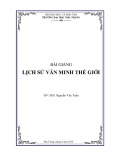
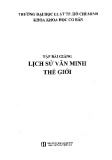

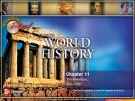
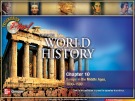
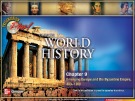
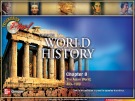
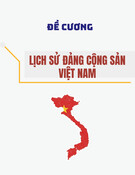
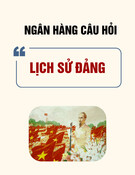







![Giáo trình Tổ chức và Quản lý Hoạt động Văn hóa Thông tin Cơ sở (Ngành Quản lý Văn hóa - Trung cấp) - Trường Trung cấp Mỹ thuật - Văn hóa Bình Dương [Mới nhất]](https://cdn.tailieu.vn/images/document/thumbnail/2025/20251110/kimphuong1001/135x160/17861762748492.jpg)





